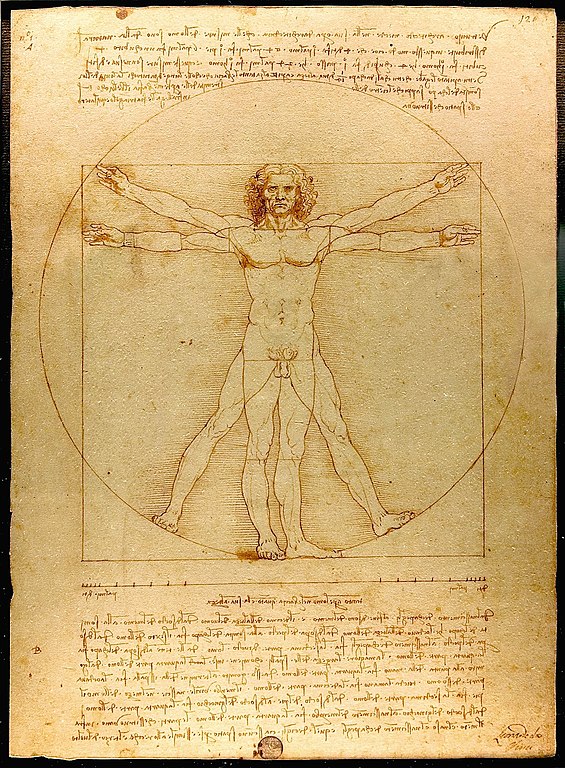
Name: The Vitruvian Man
Artist: Leonardo da Vinci
Date Painted: c. 1490
Period: Renaissance
Dimensions: 34.4 cm (h) x 24.5 cm (w)
Medium / Material: Pen, Brown ink and watercolor on paper
Current Location: Gallerie Dell’Accademia, Venice
Introduction
The Vitruvian Man is a world-renowned drawing created by Leonardo da Vinci around the year 1490. The work is often considered a cultural icon as well as a representation of the blend of art and science during the Renaissance. Leonardo’s drawing is named after the ancient Roman architect Vitruvius, who described the ideal human proportions in his treatise “De architectura.” The Vitruvian Man is a study of the proportions of the human body, linking art and classical architecture with the perfection of nature.
Composition and Technique
The drawing is made with pen and ink on paper and depicts a male figure in two superimposed positions with his arms and legs apart inside both a circle and a square. The dual position of the limbs creates a visually striking overlap that suggests motion and provides multiple perspectives of the body’s symmetry.
Leonardo’s meticulous approach is evident in the precise measurements and annotations surrounding the figure, where he notes the proportions described by Vitruvius. For example, the text explains that the span of the arms is equal to the height of a man and that the distance from the hairline to the bottom of the chin is one-tenth of the height of a man, among other proportions. These notes not only serve as an explanation of the drawing but also as an insight into Leonardo’s methodical process and his desire to unify scientific understanding with artistic representation.
Symbolism and Interpretation
The Vitruvian Man is often interpreted as a symbol of the Renaissance humanist ideal, embodying the era’s belief in the harmony between the human form, nature, and the cosmos. By placing the human figure within a circle and a square, Leonardo illustrates the ancient idea that the circle represents the divine (the infinite) and the square represents the earthly (the finite). The drawing embodies the principle that man is a measure of all things, connecting the microcosm of the human body to the macrocosm of the universe.
Scientific and Artistic Significance
Leonardo’s drawing goes beyond a simple exercise in figure drawing; it is a profound investigation into the intersection of art and science. His exploration of human proportions highlights his broader interest in anatomy, geometry, and the principles of physics and mathematics. This interdisciplinary approach reflects the Renaissance spirit of inquiry and Leonardo’s insatiable curiosity about the natural world.
The Vitruvian Man also showcases Leonardo’s masterful skill as a draftsman. His use of line to delineate form and space, his attention to detail, and his integration of text and image demonstrate his innovative approach to drawing as a tool for exploration and understanding.
Legacy
The Vitruvian Man has had a lasting impact on both the arts and sciences. It epitomizes the Renaissance ideal of the polymath, a person whose expertise spans a significant number of different subject areas. Today, the drawing remains an emblem of the unity of knowledge and the human desire to understand our place in the universe. It continues to inspire artists, architects, scientists, and thinkers, symbolizing the potential for harmony between the creative and analytical aspects of human thought.